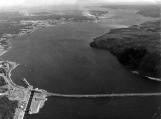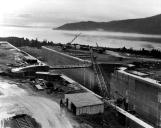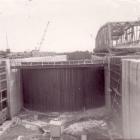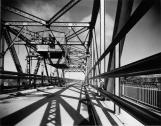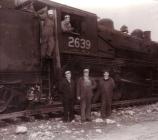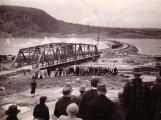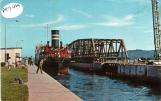2
The Canso Causeway and Canal were constructed between 1952 and 1955 under a tri-party agreement among the federal Department of Transport, the Nova Scotia Department of Highways, and the Canadian National Railway. Funding was from the Department of Transport under this agreement to provide a fixed link between mainland Nova Scotia and Cape Breton Island. This would replace an auto ferry crossing between the town of Mulgrave and Port Hawkesbury and a train ferry crossing between Mulgrave and Point Tupper.5
The construction of the 308 foot swing bridge to span the Canso Canal began on September 1st, 1954. According to Joe Larter, one of the workers,it was rivetted together by Maritime Steel & Foundries Limited, of New Glasgow, Nova Scotia on site . Pictured at top is the swing bridge under construction at the Canso Canal site. A worker stands atop the structure. To the right is the cabin which houses the controls, on the lower floor, and the machinery above. The bottom picture taken from the west side of the canal shows the bridge deck being assembled8
The completed bridge was moved into position, spanning the Canal on April 11, 1955. An account of the event appeared in the Cape Breton Post the next week."...the 308 foot swing bridge over the Canso Causeway locks was moved into position by a hefty bulldozer, completing the last link of the building of the world's deepest man-made causeway."
9
Swing Bridge over the Canso Canal owned by the Canadian National RailwayApril, 1955
Canso Canal Bridge
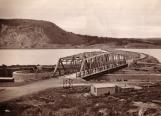
10
The first test of the swing bridge for rail traffic happened unexpectedly on April 18, 1955.Even construction officials at the site were unaware that the first run was planned so early. The last rail was hammered into position at 11:20 am. and then workmen turned their attention to bracing the giant bridge that spanned the locks. For four hours about 20 men laboured to place hydraulic hoists under the bridge to give it the support necessary to accommodate the test run. At 3 pm., Mr. Delong, CNR construction superintendent signalled the crew of 2639 to bring the train into position. Workmen all along the sprawling project gathered to witness the crossing. The work siren sounded and the first train was on its way across the "Road to the Isles".
